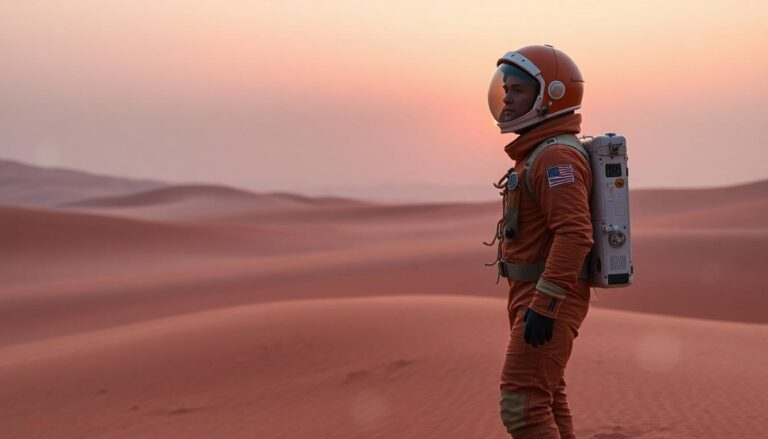Ready Player One Book Review – Exploring the Dystopian Adventure
Ready Player One is not just another science fiction novel; it’s a vibrant exploration of a future where reality is a struggle. Set in the dystopian year of 2044, people escape into the OASIS, a sprawling virtual world filled with 1980s pop culture references. This captivating backdrop has garnered a massive following, resonating with both nostalgic readers and newcomers alike.
In this review, we’ll dive into the themes that make Cline’s debut memorable. From the challenges faced by its protagonist, Wade Watts, to the corporate villains that threaten the OASIS, the story raises vital questions about identity and freedom in a world overtaken by technology. Whether you’re a seasoned reader or just dipping your toes into books, there’s something in this tale that’s bound to grab your attention. Get ready to discover why this novel has left such a significant mark on the literary landscape.
A Dystopian Future Unveiled
The world of Ready Player One is not just a mere backdrop; it’s a vivid, immersive experience that holds the key to understanding the characters’ motivations and the societal issues they face. Set in 2044, the novel paints a sobering picture of reality, where economic decline and societal fragmentation drive individuals into a virtual sanctuary known as the OASIS.
The World of the OASIS
The OASIS is a vast virtual reality environment that offers an escape from the crumbling reality outside. It features breathtaking landscapes—from futuristic cities to fantastical realms filled with nostalgia-inducing pop culture elements. Users can craft their avatars, participate in games, and explore endless possibilities. This virtual environment can be a refuge, a playground, and even a workplace.
Key features of the OASIS include:
- Immersive Experiences: The VR technology employed is highly advanced, allowing for photorealistic interactions. Users can feel, touch, and manipulate the virtual environment, blurring lines between reality and fantasy (source).
- Community Engagement: The platform fosters a unique sense of community, where like-minded individuals can connect, share experiences, and collaborate, forming friendships that often surpass their real-world connections.
- Limitless Creativity: Within the OASIS, the only limits are one’s imagination—allowing users to create, explore, and engage in adventures that would be impossible in real life.
The significance of the OASIS lies in its role as a double-edged sword. On one hand, it serves as a temporary haven from a harsh world; on the other, it raises questions about the costs of such escapism. As users seek solace in a virtual utopia, what happens to their real-world responsibilities? How does this shift in focus impact their identities?
Escapism and Society
As the OASIS becomes a primary mode of existence for many users, it poses critical societal implications. Individuals often choose to escape real-life difficulties, leading to both psychological and social consequences. The reliance on a virtual reality platform reveals deeper truths about human behavior.
- Avoiding Reality: Many characters in Ready Player One use the OASIS to sidestep their problems, highlighting a growing trend in society. Virtual escapism often masks issues such as economic hardship, loneliness, and dissatisfaction with life.
- Identity Crisis: In their quest for fulfillment within the OASIS, users manipulate their identities, sometimes adopting entirely new personas. This raises essential questions about authenticity and self-perception (source).
- Diminished Real-world Connections: As individuals engage more with the digital world, their real-life relationships can suffer. The time spent in the OASIS can lead to social isolation and a weaker sense of community, even as virtual interactions flourish (source).
The novel prompts readers to reflect on the balance between technology and humanity. As indulgent as it may be to escape into a vibrant, fantastical world, the risks associated with disconnecting from reality are profound. How much of our lives are we willing to sacrifice for an idealized existence? Exploring these questions highlights the cautionary tale that Ready Player One ultimately conveys.
The Quest for the Easter Egg
In Ready Player One, the search for James Halliday’s Easter egg represents a thrilling race for fortune and fame. As players navigate this virtual universe, they uncover layers of nostalgia, pop culture, and intense competition. Central to this narrative is Wade Watts, known by his avatar name, Parzival. His journey is not just about winning; it’s about self-discovery and resilience in a world dominated by technology.
Meet Wade Watts (Parzival)
Wade Watts, an 18-year-old living in the desolate backdrop of a future America, embodies the classic underdog. He grows up in the Stacks, a bleak housing community filled with trailers stacked upon one another, where poverty prevails. Despite his grim surroundings, Wade is a relentless dreamer, pouring his energy into the OASIS, a vast virtual realm where he can be anyone—an escape from his harsh reality.
Wade’s motivations are deeply rooted in his admiration for James Halliday, the creator of the OASIS. When Halliday passes away, he leaves behind a massive treasure hunt for his Easter egg, promising the winner full control of the OASIS and his fortune. Wade’s obsession with the 1980s pop culture that Halliday adored drives him forward. He meticulously studies Halliday’s life, immersing himself in every detail. But Wade is more than a mere egg hunter. His character evolves from a reclusive, selfish gamer into a courageous and loyal friend who values real-world connections as much as his virtual triumphs.
Wade’s quest epitomizes passion and determination. He navigates through puzzles, combative rivals, and the looming threat of corporate greed. For a deeper dive into Wade’s character, check out the analysis here: Wade Watts / Parzival Character Analysis.
The Competition: Gunters vs. Sixers
In the race for Halliday’s egg, two factions emerge: the Gunters and the Sixers. Gunters, short for “egg hunters,” are independent players like Wade, who dedicate their lives to finding the elusive prize. They are passionate, knowledgeable, and driven by the thrill of the hunt. For these players, it’s not just about riches; it’s about a sense of identity and belonging within the vast world of the OASIS.
On the opposite side are the Sixers, employees of the corporate giant Innovate Online Industries (IOI). They represent a stark contrast to the spirit of the Gunters. The Sixers possess extensive resources, financial backing, and an organized strategy to capture the egg, treating it as a corporate objective rather than a personal quest. This competition highlights a fundamental tension in the narrative: the struggle between individual dreams and corporate dominance.
The rivalry intensifies as Wade and his fellow Gunters face numerous challenges, including battles for survival and survival against the backdrop of corporate exploitation. The dangers that come with the Sixers’ tactics remind readers of the stakes involved. Each interaction between Gunters and Sixers raises questions about ethics, passion, and the true cost of pursuing one’s dreams. Explore more about this rivalry’s symbolism here: Gunters and Sixers in Symbolism.
Through Wade’s journey and the rivalry with the Sixers, Ready Player One delves into the themes of identity, freedom, and the consequences of technology. The allure of the Easter egg challenges each character to confront their motivations and the realities of their choices.
1980s Nostalgia and Pop Culture References
In Ready Player One, the rich tapestry of 1980s nostalgia plays a pivotal role in shaping the narrative and characters. The book is filled with references that not only evoke fond memories but also serve as vital components of the storyline. These references bridge the gap between the past and the future, creating a unique sense of connection for readers who grew up in that era or have an appreciation for pop culture.
Key References and Their Impact
Throughout the book, Ernest Cline weaves in iconic elements from the 1980s, creating a treasure map that resonates with both casual readers and die-hard fans. Key references include movies, video games, music, and even fashion. Each reference penetrates deeper into the plot and character development, enriching the reading experience.
For instance, the DeLorean from Back to the Future is more than just a car; it symbolizes escape and adventure. Similarly, Halliday’s obsession with Dungeons & Dragons reflects a longing for communal experiences—something missing in the bleak world of 2044. The significance of these references is multi-layered; they create a sense of nostalgia while embedding lessons and themes relevant to today’s audience.
- Impact of Video Games: Games like Pac-Man and Galaga trigger nostalgia among readers, leading them to remember their childhood. These references serve to highlight Wade’s journey as a gamer and his deep connection with Halliday’s vision. The game mechanics aren’t just for fun—they emphasize teamwork and strategic thinking in Wade’s quest. For an in-depth exploration of these references, check out the 80’s Pop Culture Inventory here.
- Cinematic Touchstones: The book’s heavy reliance on movies—like The Breakfast Club and Ghostbusters—acts as a reflection of Wade’s struggles. These films often center on themes of friendship, self-identity, and overcoming adversity. They connect Wade’s journey to a broader narrative about belonging and acceptance.
- Musical References: The inclusion of music from bands like Rush not only helps to establish a timeless atmosphere but also emboldens Wade’s character. His passion for the band’s music illustrates his longing for connections in a fragmented world, making the reader question the importance of music in shaping identity.
By embedding these references in the plot, Cline creates a multifaceted layer of meaning that invites readers to reflect on their own experiences. This combination of nostalgia and story is what makes Ready Player One a compelling read that resonates across generations.
The Significance of Geek Culture
Ready Player One serves as both a celebration and critique of geek culture. It’s a love letter to those who find solace and community within its confines, while also addressing the darker aspects that can arise from hyper-fixation on nostalgia.
The characters in the book, primarily Wade and his friends, embody the enthusiasm of geek culture. They are devoted, knowledgeable, and fiercely competitive about their shared interests. However, Cline doesn’t shy away from showcasing the pitfalls of this culture:
- Inclusivity vs. Exclusivity: Wade, along with other characters, often finds himself in spaces that celebrate geekiness, but they also highlight an exclusionary attitude towards outsiders. As the narrative progresses, Wade learns the importance of fostering inclusivity among fellow Gunters, showcasing how geek culture can unite or divide.
- Corporate Exploitation: The Sixers, the corporate antagonists, symbolize the commercialization of geek culture. Their approach to the Easter egg hunt reflects a shift away from passion and creativity, turning it into a profit-driven quest. This juxtaposition raises questions about how commercial interests can corrupt genuine enthusiasm.
- The Danger of Escapism: While the OASIS offers a retreat from reality, it also serves as a cautionary tale about the consequences of excessive escapism. The characters risk losing touch with real-life relationships and obligations in their quest for virtual validation. The balance between enjoying fantasy while maintaining real-world connections is a central theme in the narrative.
In essence, Ready Player One unpacks the complexities of geek culture, portraying it as something rich and rewarding yet fraught with challenges. Readers are left to ponder their own relationship with nostalgia and how it shapes their identities today. For further insights into the relationship between geek culture and the narrative, see this analysis on the problems within geek media.
Character Development and Themes
The characters in Ready Player One are intricately woven into the fabric of the narrative, showcasing growth, friendship, and the challenges of competition in a virtual world. The evolution of Wade Watts and the dynamics of his relationships with supporting characters illuminate the underlying themes of identity and connection.
Wade’s Journey: Analyze Wade’s growth and the challenges he faces throughout the book.
Wade Watts, also known as Parzival, embarks on a transformative journey throughout Ready Player One. Initially, Wade appears as a reclusive teenager engulfed by the allure of the OASIS, longing to escape his grim reality. The Stacks, his home, mirrors his internal struggles—overcrowded and dismal, it’s a stark contrast to the thrilling adventures found in the virtual realm.
As Wade delves deeper into his quest for Halliday’s Easter egg, he encounters a myriad of challenges that catalyze his growth. The hurdles that Wade faces include:
- Isolation vs. Connection: At the story’s beginning, Wade often prefers solitude and anonymity, heavily investing in the OASIS. Yet, as he navigates the complexities of friendships, especially with Art3mis and Aech, he learns the value of real-world connections. Through their interactions, Wade transforms into a more open, loyal, and altruistic person. This personal growth can be explored in more detail in this character analysis.
- Confronting Fear: Wade’s competition against the Sixers reveals his fears and insecurities. The stakes are high, and Wade must overcome the apathetic tendencies that define him. The journey demands courage, leading him to confront not just external threats but also his internal conflicts.
- Understanding Identity: As Wade immerses himself in Halliday’s world, he grapples with his identity. He learns that success in the OASIS doesn’t equate to fulfillment. His experiences challenge him to re-evaluate what truly matters—friendship, respect, and genuine connections—ultimately reshaping his concept of self.
Wade’s evolution is at the heart of the narrative, making him a relatable and compelling protagonist. His growth embodies the essential struggle between virtual escapism and real-life responsibilities.
Supporting Characters: Introduce key supporting characters and their roles in Wade’s story.
Wade is not alone in his journey; several supporting characters play crucial roles in his growth and the unfolding of the narrative. These interact as reflections of Wade’s challenges and aspirations, each contributing to the overarching themes.
- Art3mis (Samantha Cook): A skilled Gunter, Art3mis is more than a love interest; she serves as a catalyst for Wade’s motivations. Her expertise in navigating the OASIS sparks Wade’s passion for knowledge and helps him grow emotionally. Through their relationship, Wade learns the importance of shared goals and emotional intimacy. Art3mis embodies the notion that success is not just about the prize; it’s also about who you share the journey with.
- Aech (Helen Harris): As Wade’s closest friend, Aech provides companionship and comic relief. Their bond highlights lessons on collaboration and mutual support in a competitive environment. Through Aech, Wade discovers the strength of friendship and the importance of loyalty. Despite the rivalry, their connection reinforces the idea that real relationships can thrive even in a cutthroat world.
- Nolan Sorrento: The antagonistic force behind the Sixers, Sorrento represents the corporate dangers within the OASIS. His character epitomizes greed and exploitation, contrasting Wade’s genuine pursuit of the egg. Sorrento’s presence challenges Wade to stand firm for his principles, showcasing the battle between collective joy and individualistic ambition.
- James Halliday (Anorak): The creator of the OASIS, Halliday’s legacy looms over the entire narrative. His values and love for the 1980s underpin Wade’s quest but also remind readers of the impact one individual can have on an entire generation. Halliday serves as a guiding spirit for Wade, embodying not only the thrill of adventure but also the responsibility that comes with immense power.
These supporting characters serve as mirrors to Wade’s growth, each influencing his journey in unique ways. They enrich the narrative and illuminate the key themes of Ready Player One, making it a multifaceted exploration of identity, friendship, and the impact of technology on human connections. For a deeper look at the character dynamics, check out this link to the character list.
Critical Reception and Impact
The reception of Ready Player One has sparked vibrant discussions among critics and readers alike. Following its release, opinions have varied widely, reflecting the book’s complex nature. While many praise its nostalgic undertones and engaging adventure, others critique its characterization and plotting. This divergence in opinions has led to a fascinating exploration of what the novel represents and its lasting impact on modern culture.
Mixed Reviews
Critics have offered a mix of praise and criticism regarding Ernest Cline’s storytelling. Some readers celebrate the novel as a nostalgic gem, appreciating the way it pays homage to a bygone era of pop culture. They highlight the humorous references and the exciting adventure within the OASIS. Conversely, others find fault in the depth of characterization, claiming that characters like Wade Watts sometimes feel one-dimensional or overly reliant on their pop culture knowledge.
- Characterization: Many argue that the characters lack development and nuance. The protagonist, Wade, is often seen as a vessel for nostalgia rather than a fully realized person. This raises questions about relatability—do readers connect solely through shared memories, or do they seek more profound emotional journeys? You can see more opinions on this topic here.
- Plotting: The quest for Halliday’s Easter egg captivates readers, yet some feel the plot occasionally falls short. Predictable story arcs and tropes appear in various reviews, leading critics to suggest that the plot relies heavily on moments rather than a cohesive narrative. This disappointment sometimes detracts from the overall impact of the adventure.
- Nostalgia Factor: The nostalgic elements resonate strongly with audiences who grew up in the 1980s. However, some readers question whether the focus on nostalgia overshadows the need for meaningful character arcs. As a result, the book receives mixed scores on engagement among different age groups. See more in-depth discussions about the nostalgia at play here.
Cultural Influence
Ready Player One sits at the intersection of contemporary culture, reflecting and influencing how technology shapes our lives. The idea of virtual reality as an escape from the struggles of daily life has become increasingly relevant in today’s society. The book addresses themes of escapism, identity, and the tension between reality and fantasy.
- Representation of Geek Culture: The novel serves as a rich text for understanding geek culture. It celebrates the community while also critiquing its occasional drawbacks, like exclusivity and commercialization. As readers connect with the vibrant references throughout the book, they also grapple with what it means to be part of a niche culture.
- Impact on Technology Discussions: The OASIS stands as a cautionary symbol about reliance on technology. In an age where virtual interaction increasingly replaces physical connection, Cline’s work prompts readers to reflect on their own engagement with technology. Are we losing touch with reality as we delve deeper into virtual experiences? The conversation around technology’s societal impact continues, making the themes in Ready Player One highly relevant. Dive into these cultural discussions here.
- Shift in Pop Culture Dynamics: The book has influenced how pop culture references are integrated into narrative storytelling. It showcases how nostalgia can serve as a bridge for readers to access deeper themes, contributing to broader discussions about the relevance of pop culture in contemporary media. This effect has been elaborated upon in various analyses, including a perspective on Spielberg’s nostalgic approach in his adaptation of the novel here.
In summary, Ready Player One ignites vibrant conversations centered on its mixed critical reception and profound influence on culture. Whether viewed as a nostalgic thrill ride or critiqued for its surface-level engagement, the book undeniably leaves a mark on how we perceive identity, reality, and technology today.
Conclusion
Ready Player One captures the essence of escapism in a society hungry for connection and adventure. Through Wade Watts’ journey, the novel warns us about the delicate balance between virtual thrills and the importance of real-life relationships. As readers navigate this vibrant blend of nostalgia and caution, they discover deeper truths about identity and freedom.
For anyone seeking a thought-provoking read, this book offers a unique lens into our relationship with technology and pop culture. What role do you think virtual spaces will play in shaping our lives in the future? Share your thoughts and join the conversation about the impact of escapism on society. Thank you for exploring this remarkable story with us!







